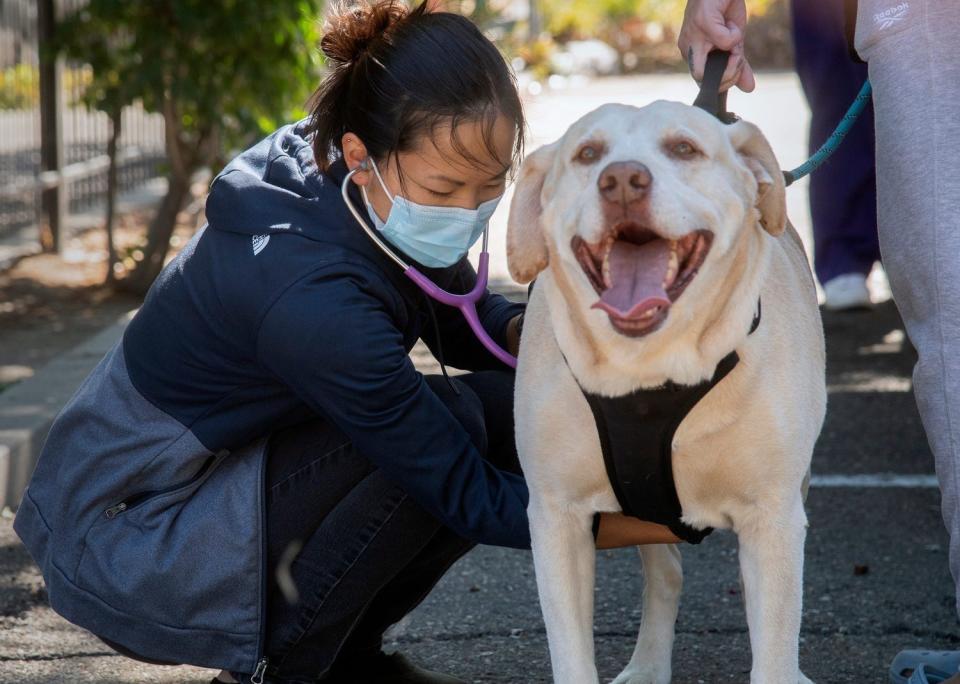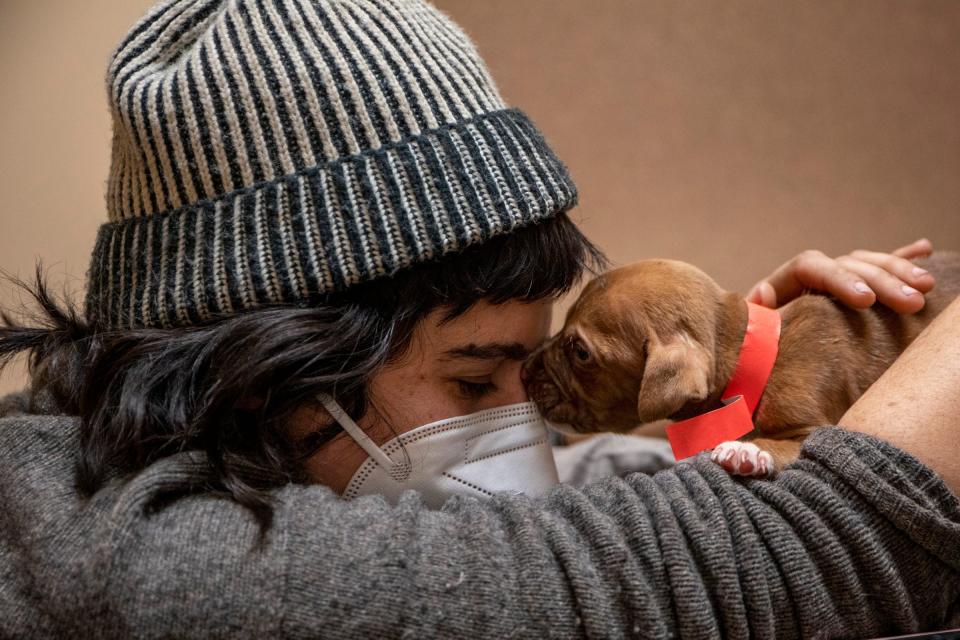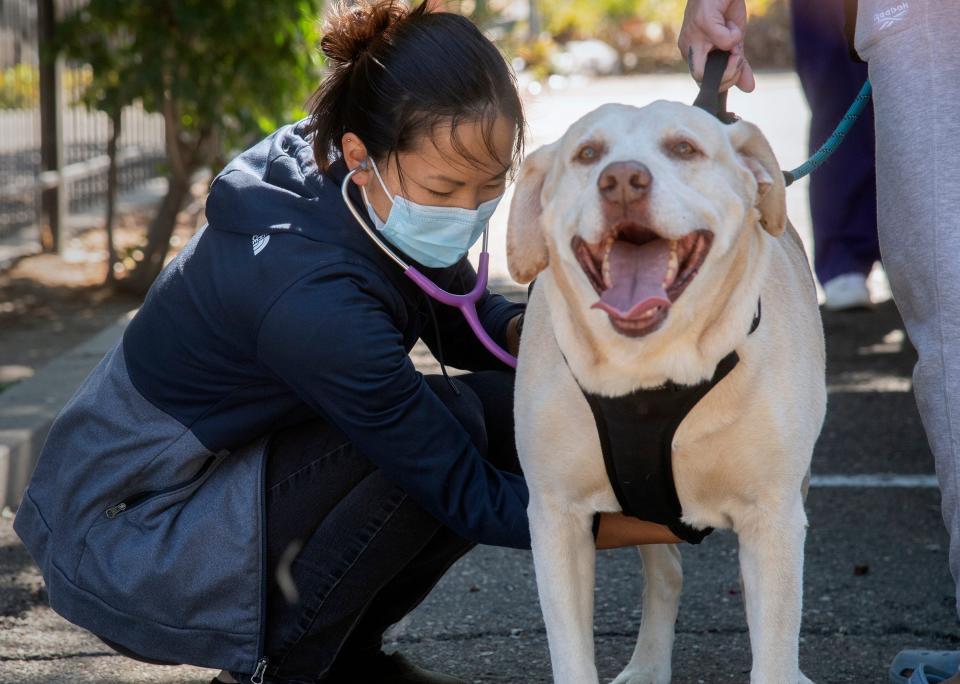Dog respiratory illness remains a mystery, but scientists researching potential new pathogen
While pet owners across the U.S. planned for holiday travel last fall, many were hit with a fear for their four-legged friends as multiple states reported increased cases of dog respiratory illness.
The illness showed symptoms similar to canine infectious respiratory disease complex (CIRDC), also known as kennel cough, but was resistant to typical treatments. Oregon called it a mystery, and soon cases were reported from more than a dozen states.
The United States Department of Agriculture National Veterinary Services Laboratories began sequencing some cases, and found that many had a common cause, not linked to a single infection nor a new pathogen, the agency said in a recent statement to USA TODAY.
While the lack of a central data collection agency makes tracking cases difficult, experts believe that cases have waned and this was another round of seasonal ebbs and flows for common dog illnesses on top of a growing trend of canine respiratory illness that has emerged in the last few years.
"If we get a new pathogen...it's pretty dramatic," said Dr. Scott Weese, an expert in emerging animal disease and author of a blog popular among state veterinarians, pointing out that this disease has not acted dramatically like the COVID19 pandemic. Rather, he said, "we've had this gradual increase in respiratory disease. We get these blips that occur and the blips get more obvious when you've already got a higher baseline level of disease."
More: Her dog died from a respiratory illness. Now she’s trying to help others.
Routine spikes in respiratory illness up year over year, but not rapidly accelerating

Scientists and veterinarians have been seeing rises in respiratory illness since the pandemic restrictions lifted, according to Trupanion, a pet insurance company, though they can't say for certain there is a causal relationship.
Respiratory illness claim data from Trupanion provided exclusively to USA TODAY indicated that claims were relatively flat between 2018-2020, but began rising in 2022.
In the last year, Trupanion has seen a 57% increase in respiratory illness related claims in dogs, but that trend did not accelerate in the last few months of 2023.
The data also shows some pockets of activity, with the following locations having the some of biggest year-over-year increases for the October to December timeframe:
Nevada (+106%)
Oregon (+67%)
Colorado (+50%)
California (+20%)
Nova Scotia (+189%)
Ontario (+20%)
British Columbia (+14%)
Experts don't know exactly why cases have been increasing for the last few years, but they believe it is due to a few things that boil down to a bigger dog population with less resistance to the illnesses and more exposures. Disrupted vaccination schedules during the pandemic, popularity of flat-faced dog breeds and dogs returning to shared care facilities are all contributing factors, Weese said.
New Hampshire labs researching potentially novel pathogen in 14% of cases

While experts were investigating the rising reports of cases last fall, an interesting study from the University of New Hampshire emerged flagging a potentially new pathogen. While the leaders in the study say they have found preliminary evidence suggesting it is a new pathogen linked to dog respiratory illness, Weese and UNH said there is still some more research that would need to be done for it to be convincing. (The USDA did not respond to USA TODAY's request for comment on the UNH research).
David Needle, pathology section chief at the N.H. Veterinary Diagnostic Laboratory at the University of New Hampshire, said that out of the 259 samples from sick dogs they received, 14% had the new pathogen. He added that, while he was surprised to find a notable subset having the new pathogen, it still doesn't come close the level of virality that caused COVID to boom across the world.
"What we found here is not virus or one bacteria to rule them all," he said. "COVID is a rare thing."
The UNH Veterinary Diagnostic Laboratory along with the Hubbard Center for Genome Studies are still continuing to try to characterize the new pathogen to help other scientists determine how to test and treat it.
In the meantime, Needle said, "people gotta chill out."
More: New data shows dog respiratory illness up in Canada, Nevada. Experts say treat it like a human cold
Expert advice for pet owners: Don't panic, vaccinate, talk to your vet
Trupanion's data showed that while respiratory illness is up, fewer pets are dying as a result of respiratory illness.
Some factors of a dog's health can make them more susceptible to becoming seriously ill from a respiratory illness, such as breed, preexisting health condition, and age. (Trupanion said that dogs older than 8-years-old are six times more likely to die from severe respiratory illness than younger dogs).
Trupanion's chief veterinary and product officer Dr. Steve Weinrauch said that talking with their veterinarians can help pet owners assess risk on an individual basis for the dog and inform pet owners of potential cases in the area. Also, pet owners should ensure vaccines are up to date.
Weinrauch said that while the "mysterious illness" did not take off the way that some people feared, there were valuable lessons to be learned about the challenges of tracking pet illnesses. He said Trupanion is starting a pet public health early warning and detection system to pool illness data from claims in collaboration with government agencies, universities and medical providers to gather more data on illnesses moving forward.
"It's not that all the answers are here, it's that data is starting to surface and now we can start to analyze that data and look for patterns and, and go from there," Weinrauch said.

This article originally appeared on USA TODAY: Dog respiratory illness mystery remains as new cases wane

